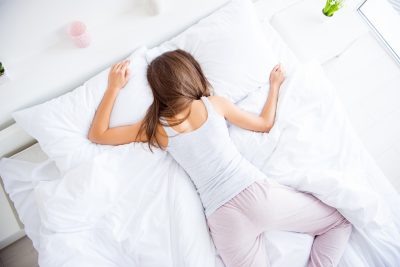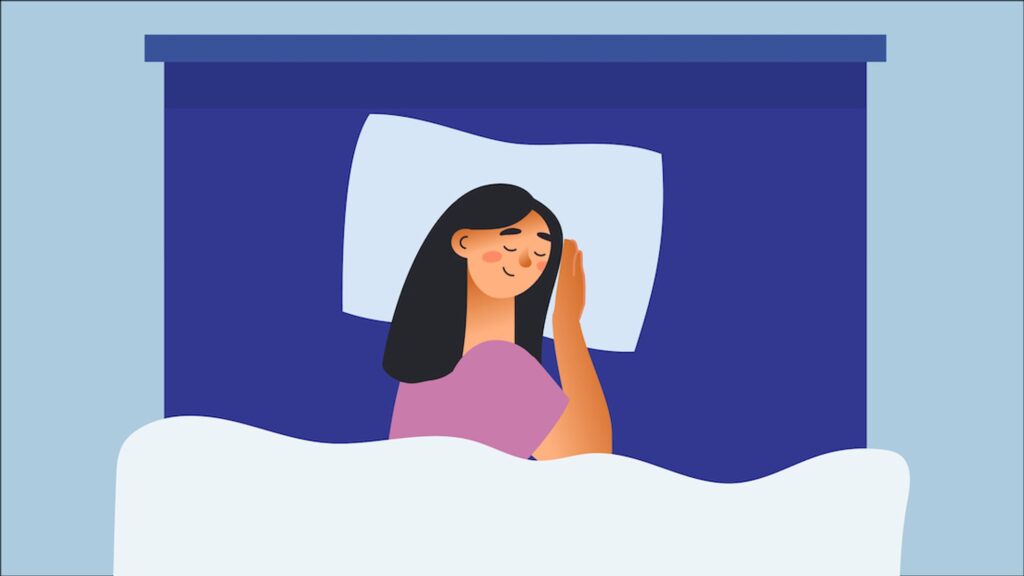
Anyone trying to improve the quality of their sleep would likely begin with sleep hygiene basics, starting with reviewing noise and light exposure, their sleeping environment, bedding choices, and caffeine consumption. And while these are all great jumping-off points, very few people give more than a passing thought to the ergonomics of their sleep. And while we’re all guilty of overthinking it, there’s no mystery here.
As Dan Ford, Sleep Psychologist and Clinical Director of The Better Sleep Clinic, tells Sleepopolis, “If you wake up in the morning feeling refreshed, you’re probably doing it right.” Ultimately, a part of “doing it right” may be finding the best sleeping position.

Note: The content on Sleepopolis is meant to be informative in nature, but it shouldn’t be taken as medical advice, and it shouldn’t take the place of medical advice and supervision from a trained professional. If you feel you may be suffering from any sleep disorder or medical condition, please see your healthcare provider immediately.
Long Story Short
- The majority of people are side sleepers, followed by back sleepers, then stomach sleepers.
- Many experts consider side sleeping to be the healthiest sleeping position.
- Regardless of your preferred sleeping position, the right mattress and pillow can make a big difference.
How Sleeping Positions Affect Your Health
Most people fall into bed night after night with nary a thought about their preference for sleeping on their back, side, or stomach. But the fact is your preferred sleeping position can affect your overall health. Side sleeping can promote better spinal alignment, keep snoring and sleep apnea in check, and reduce symptoms of GERD or heartburn. Back sleeping is an excellent way to reduce hip and back pain, and stomach sleeping does little more than minimize snoring.. Our experts dive in below.
Side Sleeping
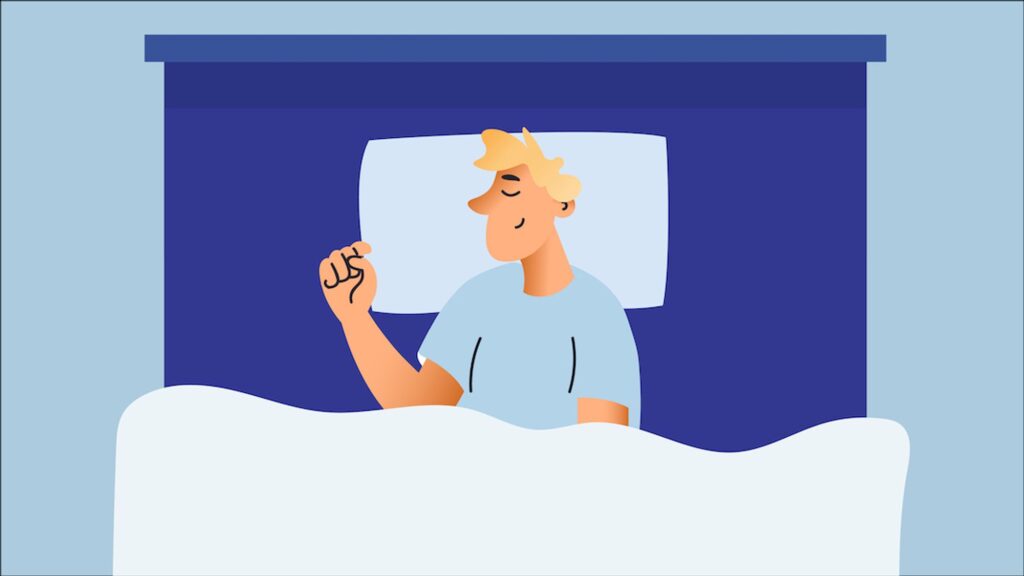
Out of all possible configurations, side sleeping is the most popular sleeping position by far. In fact, the latest research shows that over 50 percent of the population prefers side sleeping. And probably for good reason: Research also shows that side sleeping is the best sleeping position for those with breathing problems, those with sleep apnea, anyone diagnosed with GERD, or women in their second and third trimester of pregnancy.
Benefits of Sleeping on Your Side
No doubt, your left or right side may be the best position for sleeping because it comes with plenty of health and wellness benefits.
First, Ford tells us that “side sleeping can reduce the severity of obstructive sleep apnea events and central sleep apnea events.” And the research shows us as much. One study out of India in 2019 showed that while CPAP is still the gold standard for treating sleep apnea, positional therapy, aka sleeping on your side, has its merits.
Dr. Funke Afolabi-Brown, sleep medicine physician and founder of Restful Sleep MD, adds that not only is “side sleeping good for people who snore (because it helps keep the airways open), but it can also be “beneficial for people with acid reflux or heartburn, as it can help prevent stomach acid from flowing back into the esophagus.”
In addition to keeping snoring and sleep apnea in check, side sleeping can also promote better spinal alignment and reduce neck and lower back pain.
Side Sleeping and Pregnancy
Beyond being beneficial to those with sleep apnea and acid reflux, side sleeping is probably the best sleeping position for pregnant women in the later stages of their pregnancy. Afolabi-Brown says, “Side sleeping is recommended during pregnancy because it helps improve blood flow to the fetus, whereas other positions can worsen this.”
Sleeping on the Right vs. Left Side
While pregnant mothers are encouraged to sleep on their left side, so too, is anyone who regularly experiences heartburn or GERD. Some studies have shown that right-side sleeping can exacerbate these issues, while left-side sleeping can help keep those symptoms in check.
Cons of Sleeping on Your Side
While side sleeping appears to come with plenty of benefits, back pain is a notable drawback to the position. Those who regularly sleep on their side may experience more shoulder pain, and Afolabi-Brown says that side sleeping on a soft mattress may not keep your back in the best alignment.
How to Sleep Best on Your Side
Side sleeping is the healthiest sleeping position, but there’s always room for improvement.
Improve Your Spinal Alignment
If you experience back pain when sleeping on your side, Ford suggests “placing a pillow between your legs. This will help get your spine, hips, and pelvis back in alignment.
Invest in a Good Mattress and Pillows
Side sleepers may opt for a mattress that provides plenty of pressure relief to the shoulders and hips.
And not only is it important to get a good pillow, but a high-loft pillow specifically designed for side sleepers may be even more beneficial. In the absence of adequate head support, side sleepers may find that their weight goes into their shoulders for support. More often than not, that may translate to shoulder pain when you wake that possibly lasts throughout the day.
Back Sleeping
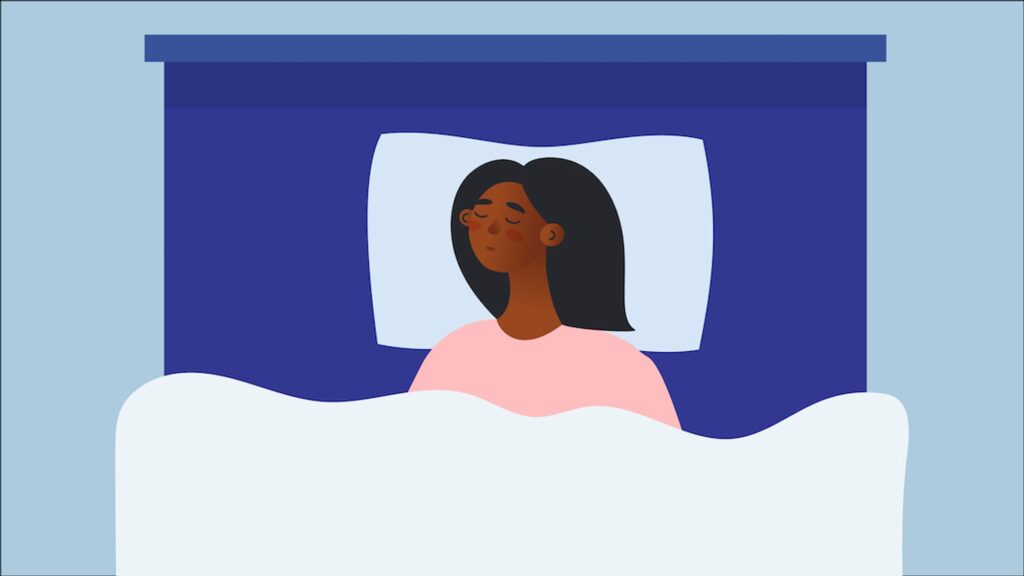
Back sleeping is the second most popular sleeping position, with about 37.5 percent of people choosing the supine position night after night.
Benefits of Sleeping on Your Back
According to Afolabi-Brown, back sleeping is “generally considered the best sleeping position for spinal health, as it allows your neck, head, and spine to rest in a neutral position.” Beyond distributing your weight evenly across your body, back sleeping also eliminates unnatural curves in the spine while you sleep.
Other benefits of slumbering in the supine position are reduced hip, back, and neck pain, as well as a reduced chance of getting wrinkles or creases on the skin.
Cons of Sleeping on Your Back
“Sleeping in the supine position tends to increase apnea events and lower sleep quality,” says Ford. Beyond higher apnea-hypopnea index (AHI) and more pronounced snoring, Ford reminds us that “supine sleeping has been linked with preterm stillbirths.” However, many factors must be considered when it comes to stillbirths, and expectant mothers should work with their doctors to determine what’s best for them.
Apnea-hypopnea Index (AHI) Defined
The apnea-hypopnea index (AHI) is the average number of apneas (complete cessations of breathing) and hypopneas (shallow breathing) that occur per hour of sleep. AHI is used to evaluate the severity of obstructive sleep apnea (OSA) and possible treatment outcomes.
How to Sleep Best on Your Back
Afolabi-Brown says “a relatively firm mattress that keeps the spine in alignment” is the best option for back sleepers. Ultimately, a medium-firm to firm mattress provides pressure relief to the lower back while supporting the hips to keep them in alignment with the shoulders.
Beyond a good mattress, back sleepers should consider a medium loft pillow that doesn’t crane the neck too far up when lying in a supine position.
Stomach Sleeping
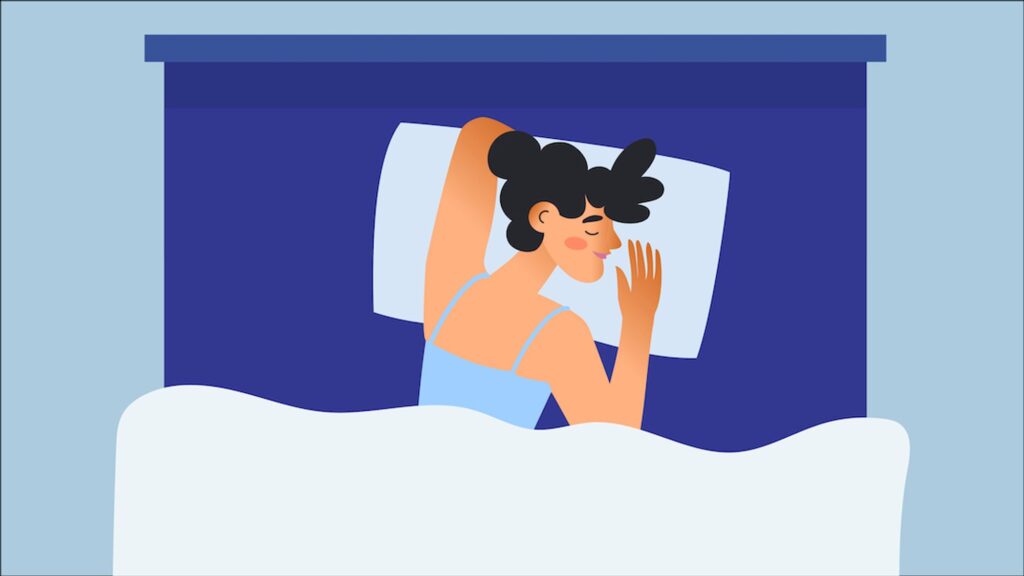
With only 7 percent of the population lying face down while they sleep, stomach sleeping comes in last on our list.
Benefits of Sleeping on Your Stomach
While stomach sleeping can reduce snoring, this sleeping position doesn’t come with any other real benefits.
Cons of Sleeping on Your Stomach
While you might think that lying face down may be one of the best sleeping positions for sleep apnea, that’s not typically the case. Yes, this sleeping position pulls your tongue forward and reduces the risk of airway collapse, but by design, stomach sleeping covers your face and mouth, which may exacerbate symptoms of severe sleep apnea.
In addition to worsening sleep apnea symptoms, stomach sleeping can also:
- Increase neck and lower back pain as your body curves unnaturally at the lumbar region
- Cause unnecessary strain on the joints, especially the shoulders
How to Sleep Best on Your Stomach
If you’re a staunch stomach sleeper and the thought of switching your sleep position keeps you up at night, there are ways to make the prone position healthier for you.
First and foremost, a firm mattress may make all the difference. With the proper support, you’ll sleep on your bed as opposed to [sinking] into it. Ultimately, this will prevent your hips from sinking too far out of alignment with your shoulders. A low-loft pillow is also crucial for keeping your spine and neck in a nice, even (and comfy) line.
Whether you prefer sleeping on your side, eyes up to the ceiling, or facedown on the pillow, there are some things you can do to improve your overall sleeping experience.
General Tips for Better Sleep
Whether you’re a side sleeper, a back sleeper, or a stomach sleeper, there are things you can do to improve your sleep.
Mind Your Mattress
Your mattress matters, so be sure to look for one that supports your body in your preferred sleeping position, whatever it may be. A medium firm to firm mattress is best for back and stomach sleepers, and while you still want plenty of support as a side sleeper, you still need a mattress that elegantly responds to your curves. The best mattresses for side sleepers are those with pocketed coils for support, and a plush comfort layer for pressure point relief is best.
Play with Your Pillows
Pillows aren’t just for head support. To improve your alignment and alleviate pressure points, try tucking them between your knees when sleeping on your side or place a thin pillow under your hips when sleeping on your back.
Listen to your body
If you wake up with aches and pains every day, it may be time to shake things up and change your sleeping position to one that’s more comfortable. Ideally, you want to wake each morning feeling refreshed and restored, not sore and achy.
FAQs
What is the right way to sleep?
The right way to sleep is in a position that keeps your spine in a neutral alignment. This means that your neck, shoulders, hips, and lower back are all in one long line throughout the night. However, the right sleeping position for you may vary based on your body’s needs.
What is the healthiest sleeping position?
The best position for sleeping is the one that leaves you feeling refreshed and restored, not achy and angry. Generally speaking, the healthiest sleeping position is on your left side.
What does your sleeping position mean?
Some people believe your preferred sleeping position can be tied to your personality or mental health. For example, sleeping curled up in the fetal position could be seen as an indicator of vulnerability, and the list goes on. We’ll note here that this is not an exact science and does not have any data to back it up.
Is sleeping on your stomach bad?
Stomach sleeping is not typically considered the healthiest way to snooze. Not only does this position put unnecessary tension and strain on the neck and lower back, but it can also exacerbate the symptoms of sleep apnea.
The Last Word From Sleepopolis
While every sleeping position has pros and cons, side sleeping is often considered the healthiest of the lot. Stomach sleeping increases neck and lower back pain, while back sleeping exacerbates sleep apnea and snoring. Of course, the best sleeping position is the one that leaves you feeling restored and refreshed upon waking. If you’re consistently not ready to take on the world in the morning, you might consider a mattress or pillow upgrade.
Sources
Skarpsno ES, Mork PJ, Nilsen TIL, Holtermann A. Sleep positions and nocturnal body movements based on free-living accelerometer recordings: association with demographics, lifestyle, and insomnia symptoms. Nat Sci Sleep. 2017;9:267-275. Published 2017 Nov 1. doi:10.2147/NSS.S145777
Srijithesh PR, Aghoram R, Goel A, Dhanya J. Positional therapy for obstructive sleep apnoea. Cochrane Database Syst Rev. 2019;5(5):CD010990. Published 2019 May 1. doi:10.1002/14651858.CD010990.pub2
Benoist, L.B.L., Beelen, A.M.E.H., Torensma, B. et al. Subjective effects of the sleep position trainer on snoring outcomes in position-dependent non-apneic snorers. Eur Arch Otorhinolaryngol 275, 2169–2176 (2018). https://doi.org/10.1007/s00405-018-5036-y
Schuitenmaker, Jeroen M. MD; van Dijk, Mitch MD; Oude Nijhuis, Renske A.B. MD; Smout, André J.P.M. MD, PhD; Bredenoord, Albert J. MD, PhD. Associations Between Sleep Position and Nocturnal Gastroesophageal Reflux: A Study Using Concurrent Monitoring of Sleep Position and Esophageal pH and Impedance. The American Journal of Gastroenterology 117(2):p 346-351, February 2022. | DOI: 10.14309/ajg.0000000000001588
Holdaway LA, Hegmann KT, Thiese MS, Kapellusch J. Is sleep position associated with glenohumeral shoulder pain and rotator cuff tendinopathy: a cross-sectional study. BMC Musculoskelet Disord. 2018;19(1):408. Published 2018 Nov 23. doi:10.1186/s12891-018-2319-9
Good sleeping posture helps your back. Good Sleeping Posture Helps Your Back – Health Encyclopedia – University of Rochester Medical Center. Accessed June 27, 2024. https://www.urmc.rochester.edu/encyclopedia/content.aspx?ContentTypeID=1&ContentID=4460.
Krywko DM, King KC. Aortocaval Compression Syndrome. [Updated 2022 Aug 8]. In: StatPearls [Internet]. Treasure Island (FL): StatPearls Publishing; 2024 Jan-. Available from: https://www.ncbi.nlm.nih.gov/books/NBK430759/
National Guideline Alliance (UK). Maternal sleep position during pregnancy: Antenatal care: Evidence review W. London: National Institute for Health and Care Excellence (NICE); 2021 Aug. (NICE Guideline, No. 201.) Available from: https://www.ncbi.nlm.nih.gov/books/NBK573947/
What type of mattress is best for people with low back pain?. Harvard Health. (2021, February 12). https://www.health.harvard.edu/pain/what-type-of-mattress-is-best-for-people-with-low-back-pain
Desouzart, G., Matos, R., Melo, F., & Filgueiras, E. (2016, January 1). Effects of sleeping position on back pain in physically active seniors: A controlled pilot study. Work. https://content.iospress.com/articles/work/wor2243
Asghari A, Mohammadi F. Is Apnea-Hypopnea Index a proper measure for Obstructive Sleep Apnea severity?. Med J Islam Repub Iran. 2013;27(3):161-162.
Caggiari G, Talesa GR, Toro G, Jannelli E, Monteleone G, Puddu L. What type of mattress should be chosen to avoid back pain and improve sleep quality? Review of the literature. J Orthop Traumatol. 2021;22(1):51. Published 2021 Dec 8. doi:10.1186/s10195-021-00616-5
Mayo Foundation for Medical Education and Research. (2022, May 5). Slide show: Sleeping positions that reduce back pain. Mayo Clinic. https://www.mayoclinic.org/diseases-conditions/back-pain/multimedia/sleeping-positions/sls-20076452?s=1
Ford, Dan. Personal Interview. June, 2024.

